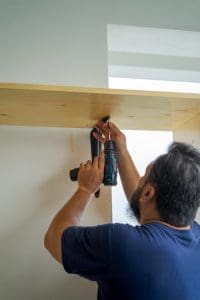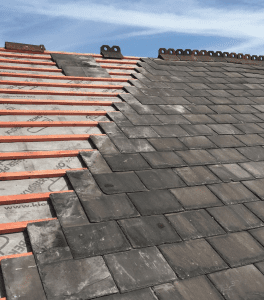Living in the UK means we’re used to unpredictable weather, and in Bury, damp and moisture are frequent challenges for homeowners. While rain and humidity may feel like minor inconveniences, they can significantly affect your walls and ceilings – especially when it comes to plastering.
At 3D Construction, we regularly work on properties in Bury where damp or weather-related damage has compromised plasterwork. If left untreated, these issues can ruin the finish of your walls, reduce the lifespan of decorative work, and even impact your home’s structural integrity. In this article, we’ll explore how weather and damp affect plastering in Bury homes and what you can do to prevent or resolve these problems.
Why Moisture Matters in Plastering
Plaster is a porous material, which means it can absorb moisture from the air or directly through walls. While this isn’t always a problem in dry, well-ventilated spaces, Bury’s climate – with frequent rain and cooler conditions – increases the risk of damp.
Moisture can:
- Weaken plaster – leading to crumbling, flaking, or powdery finishes.
- Cause staining – visible patches that ruin painted or decorated walls.
- Encourage mould growth – unhealthy black mould or mildew thriving on damp surfaces.
- Reduce durability – freshly applied plaster may not bond properly if applied to damp walls.
This makes proper plastering preparation and damp treatment essential.
Common Types of Damp in Bury Homes
Before tackling plastering issues, it’s important to understand the source of damp. We frequently see the following types in Bury properties:
1. Rising Damp
This occurs when moisture from the ground travels upwards through walls due to capillary action. Symptoms include tide marks, crumbling skirting boards, and bubbling plaster.
2. Penetrating Damp
Often caused by damaged brickwork, leaking gutters, or poor roofing, penetrating damp allows water to seep into walls from outside. This can leave patchy stains and ruin internal plaster finishes.
3. Condensation
A major issue in poorly ventilated homes, condensation builds up when warm indoor air meets cold surfaces. Over time, this leads to peeling plaster and mould growth.
How Weather in Bury Impacts Plastering
The North West climate poses specific challenges for plastering projects.
- Cold winters – Low temperatures can slow down the drying process of new plaster, leading to cracking or weak adhesion.
- High rainfall – Heavy rain increases the risk of penetrating damp, particularly in older homes with porous brickwork.
- Humidity – Humid conditions extend drying times, delaying decorating work and increasing the risk of plaster remaining soft or powdery.
At 3D Construction, we take these factors into account when scheduling and carrying out plastering in Bury homes, ensuring long-lasting, professional finishes.
Signs That Damp Has Affected Your Plaster
If you notice any of the following, damp could be compromising your plaster:
- Flaking or bubbling paint on walls
- White, powdery salts (efflorescence) appearing on the surface
- Musty odours near affected areas
- Black mould patches, especially near windows or in corners
- Crumbling or disintegrating plaster when touched
These signs indicate that repairs and treatment are needed before re-plastering can be effective.
Preparing Walls in Damp Conditions
Proper preparation is key to ensuring new plaster lasts in damp-prone Bury homes. Our process often includes:
- Identifying and treating the source of damp – Fixing leaks, improving ventilation, or repairing external brickwork.
- Applying a damp-proof course or membrane – Preventing rising damp from reoccurring.
- Using specialist plastering systems – Breathable or waterproof plaster mixes to withstand moisture.
- Allowing adequate drying time – Making sure walls are completely dry before plastering or decorating.
By treating damp first, we ensure your new plaster has the best chance of durability and longevity.
Preventing Damp Problems After Plastering
Once your walls are re-plastered, it’s important to prevent future damp. Simple steps include:
- Maintain guttering and roofing – Prevent water ingress from the outside.
- Improve ventilation – Install extractor fans in kitchens and bathrooms to reduce condensation.
- Use dehumidifiers – Particularly useful in older Bury homes with limited airflow.
- Consider breathable paints – Allowing moisture to escape rather than trapping it behind finishes.
These preventative measures protect your investment in new plastering and keep your home looking its best.
Why Hire a Professional Plasterer in Bury for Damp Issues?
DIY damp treatments and plastering may look like a quick fix, but they rarely last. Without addressing the root cause of damp, problems often return within months. A professional plasterer ensures:
- Accurate diagnosis of damp type and severity
- Use of the right materials for long-term durability
- A smooth, even finish ready for painting or decorating
- Advice on maintaining your walls to prevent future problems
At 3D Construction, we have extensive experience dealing with Bury’s damp-related plastering issues and can provide tailored solutions for every property.
Conclusion
Weather and damp are common challenges for Bury homeowners, and they can have a major impact on the quality and longevity of plastering. From rising damp to condensation, these issues can compromise your walls and make decorating almost impossible without proper preparation.
By hiring professional plasterers who understand the local climate, you can ensure your home is protected, your finishes look flawless, and your plastering investment stands the test of time.
If you’re experiencing damp or want expert plastering for your Bury home, contact 3D Construction today. We’ll assess your property, recommend the best solutions, and deliver a smooth, durable finish ready for painting and decorating.




